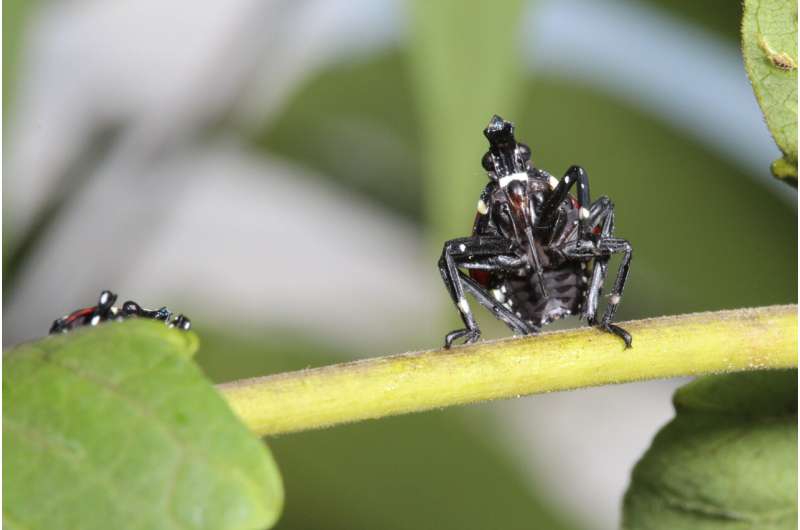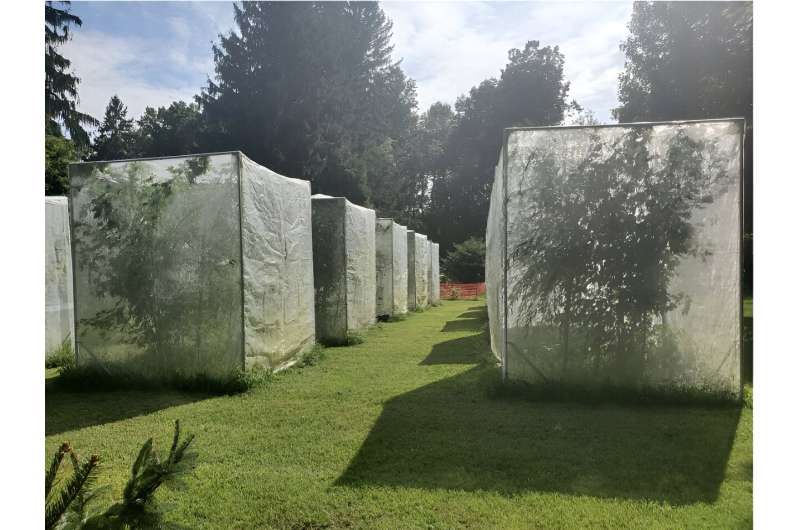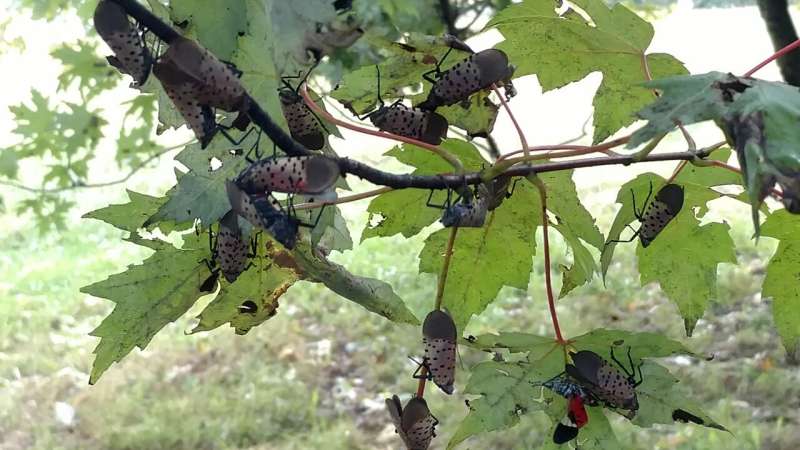This article has been reviewed according to Science X's editorial process and policies. Editors have highlighted the following attributes while ensuring the content's credibility:
fact-checked
trusted source
proofread
Invasive spotted lanternfly may not damage hardwood trees as previously thought

In 2012, when the spotted lanternfly (Lycorma delicatula) arrived in the U.S. from its home in China, scientists, land managers, and growers were understandably concerned that the sap-feeding insect would damage native and commercial trees. New long-term research led by Penn State has discovered that hardwood trees, such as maple, willow and birch, may be less vulnerable than initially thought.
"Since the lanternfly was first introduced to the northeastern U.S., the question has been, 'How at-risk are our forests?' said Kelli Hoover, professor of entomology at Penn State. "So far, we haven't had a good answer. Our study is the first to look at the long-term impacts of feeding pressure on northeastern hardwoods, and our results suggest that we are unlikely to see big impacts on the growth of trees."
The findings published in the journal Environmental Entomology on August 29.
To determine the long-term effects of spotted lanternfly (SLF) feeding on hardwood trees, the team built large enclosures containing multiple species of tree, including the insect's favorite food, the non-native tree-of-heaven (Ailanthus altissima), as well as native trees, including silver maple (Acer saccharinum), weeping willow (Salix babylonica) and river birch (Betula nigra). The team included tree-of-heaven in half of the enclosures to determine whether its presence would influence the feeding pressure on the native hardwoods.

Within the enclosures, the researchers reared different densities of spotted lanternflies for all or most of their lifecycle, from eggs through adults, to see if the number of insects feeding on a tree would impact its growth and survival. After the first two years, they reduced the density of the insects to see if trees would recover. They monitored leaf gas exchange and concentrations of nutrients that are important for photosynthesis and growth for the first two years and tree diameter growth for the full four years.
The team found that increased feeding pressure by spotted lanternfly resulted in reductions in key nutrients, which in turn, markedly impacted tree diameter growth during the first two years when feeding pressure was the most intense. However, in year three when the feeding pressure was reduced, the native trees recovered while tree-of-heaven's growth remained flat. Leaf gas exchange did not differ significantly among the treatments.
"In the wild, we have seen that spotted lanternfly population numbers vary greatly from year to year on individual trees, and they move frequently among host trees," Hoover said. "Our study represents a worst-case scenario in which the spotted lanternfly fed on the same trees for four consecutive growing seasons. While we did see reduced growth after two years of intense feeding, the native trees recovered when feeding was less intense. Importantly, over the four years, none of the trees died. Therefore, in a natural setting where the insects are constantly on the move, we would not expect significant negative impacts on forest or ornamental trees."
Hoover noted that these findings may come as a relief to growers.

She said, "If I had an apple or peach orchard, I wouldn't even treat my trees with insecticides because we've learned that the insects are not going to stick around, and the cost of treating and the potential non-target impacts of the insecticides are just not worth it."
Other authors on the paper include Lidiia Lavorivska, postdoctoral fellow, Penn State; Emily Lavely, tree fruit educator, Michigan State University; Osariyekemwen Uyi, research scientist, University of Georgia; Brian Walsh, extension educator, Penn State; Emelie Swackhamer, extension educator, Penn State; Anne Johnson, graduate student in entomology, Penn State; and David Eissenstat, professor emeritus of woody plant physiology, Penn State.
More information: Kelli Hoover et al, Effects of long-term feeding by spotted lanternfly (Hemiptera: Fulgoridae) on ecophysiology of common hardwood host trees, Environmental Entomology (2023). DOI: 10.1093/ee/nvad084
Provided by Pennsylvania State University




















